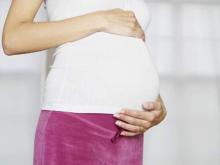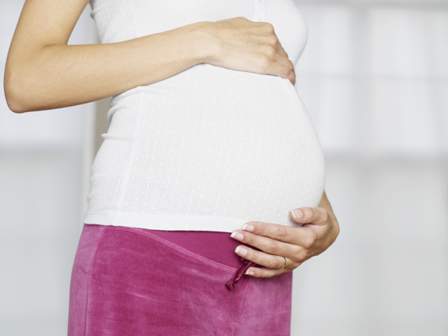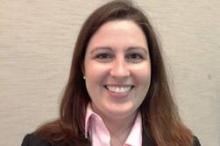User login
American Congress of Obstetricians and Gynecologists (ACOG): Annual Clinical Meeting
New ACOG president puts focus on smoking, obesity
SAN FRANCISCO – The new president of the American College of Obstetricians and Gynecologists wants ob.gyns. to step up their efforts to help patients with their overall wellness, including smoking cessation, help with weight control, and cardiac screening.
For many women, the ob.gyn. is their primary physician and if that physician isn’t counseling and screening for these health issues, it won’t be done at all, Dr. Mark S. DeFrancesco, the incoming president of ACOG, said during a press briefing at the organization’s annual meeting.
Dr. DeFrancesco, an ob.gyn. in Waterbury, Conn., and assistant clinical professor at the University of Connecticut, was installed as the new ACOG president on May 6. He also will serve as president of the American Congress of Obstetricians and Gynecologists.
He said that he plans to focus on population health, specifically encouraging ob.gyns. to do more to address significant preventable causes of death such as smoking and obesity, during his year-long term in office.
The idea isn’t that ob.gyns. should be treating hypertension in their offices but that they should be looking for it during the well woman visit and making appropriate referrals.
“These things should not happen on our watch,” Dr. DeFrancesco said.
He said that he plans to work with the ACOG staff to develop a toolkit for ob.gyns. that will make it easier to address these population health issues. He also plans to work with insurers to convince them to pay physicians for the time spent on this counseling.
Dr. John C. Jennings, the outgoing president of ACOG, said that Dr. DeFrancesco’s focus on population health will complement the work that ACOG has been doing over the past year in encouraging a team approach to women’s health care. For instance, if a patient needs help losing weight, physicians could partner with a dietitian. Physicians shouldn’t be expected to conquer complex health issues such as smoking and obesity on their own, he said.
“You can’t tackle those [issues] with just one physician,” Dr. Jennings said.
On Twitter @maryellenny
SAN FRANCISCO – The new president of the American College of Obstetricians and Gynecologists wants ob.gyns. to step up their efforts to help patients with their overall wellness, including smoking cessation, help with weight control, and cardiac screening.
For many women, the ob.gyn. is their primary physician and if that physician isn’t counseling and screening for these health issues, it won’t be done at all, Dr. Mark S. DeFrancesco, the incoming president of ACOG, said during a press briefing at the organization’s annual meeting.
Dr. DeFrancesco, an ob.gyn. in Waterbury, Conn., and assistant clinical professor at the University of Connecticut, was installed as the new ACOG president on May 6. He also will serve as president of the American Congress of Obstetricians and Gynecologists.
He said that he plans to focus on population health, specifically encouraging ob.gyns. to do more to address significant preventable causes of death such as smoking and obesity, during his year-long term in office.
The idea isn’t that ob.gyns. should be treating hypertension in their offices but that they should be looking for it during the well woman visit and making appropriate referrals.
“These things should not happen on our watch,” Dr. DeFrancesco said.
He said that he plans to work with the ACOG staff to develop a toolkit for ob.gyns. that will make it easier to address these population health issues. He also plans to work with insurers to convince them to pay physicians for the time spent on this counseling.
Dr. John C. Jennings, the outgoing president of ACOG, said that Dr. DeFrancesco’s focus on population health will complement the work that ACOG has been doing over the past year in encouraging a team approach to women’s health care. For instance, if a patient needs help losing weight, physicians could partner with a dietitian. Physicians shouldn’t be expected to conquer complex health issues such as smoking and obesity on their own, he said.
“You can’t tackle those [issues] with just one physician,” Dr. Jennings said.
On Twitter @maryellenny
SAN FRANCISCO – The new president of the American College of Obstetricians and Gynecologists wants ob.gyns. to step up their efforts to help patients with their overall wellness, including smoking cessation, help with weight control, and cardiac screening.
For many women, the ob.gyn. is their primary physician and if that physician isn’t counseling and screening for these health issues, it won’t be done at all, Dr. Mark S. DeFrancesco, the incoming president of ACOG, said during a press briefing at the organization’s annual meeting.
Dr. DeFrancesco, an ob.gyn. in Waterbury, Conn., and assistant clinical professor at the University of Connecticut, was installed as the new ACOG president on May 6. He also will serve as president of the American Congress of Obstetricians and Gynecologists.
He said that he plans to focus on population health, specifically encouraging ob.gyns. to do more to address significant preventable causes of death such as smoking and obesity, during his year-long term in office.
The idea isn’t that ob.gyns. should be treating hypertension in their offices but that they should be looking for it during the well woman visit and making appropriate referrals.
“These things should not happen on our watch,” Dr. DeFrancesco said.
He said that he plans to work with the ACOG staff to develop a toolkit for ob.gyns. that will make it easier to address these population health issues. He also plans to work with insurers to convince them to pay physicians for the time spent on this counseling.
Dr. John C. Jennings, the outgoing president of ACOG, said that Dr. DeFrancesco’s focus on population health will complement the work that ACOG has been doing over the past year in encouraging a team approach to women’s health care. For instance, if a patient needs help losing weight, physicians could partner with a dietitian. Physicians shouldn’t be expected to conquer complex health issues such as smoking and obesity on their own, he said.
“You can’t tackle those [issues] with just one physician,” Dr. Jennings said.
On Twitter @maryellenny
AT THE ACOG ANNUAL CLINICAL MEETING
VIDEO: Nitrous oxide for IUD insertion improves patient satisfaction
SAN FRANCISCO – Intrauterine device insertion can be a painful experience, especially for nulliparous women, but the quest for an intervention to reduce pain has yielded disappointing results.
A new study, however, suggests that nitrous oxide improves women’s satisfaction with respect to pain management during the procedure.
In a video interview at the annual meeting of the American College of Obstetricians and Gynecologists, Dr. Lauren D. Thaxton of the University of New Mexico, Albuquerque, discusses the results of her randomized, controlled, double-blind trial comparing nitrous oxide and oxygen with oxygen alone in 80 women aged 13-45 years. Women receiving nitrous oxide didn’t have lower visual analog scale pain scores than those receiving oxygen, but did report significantly greater satisfaction with pain management, she said.
Dr. Thaxton reported having no financial disclosures.
The video associated with this article is no longer available on this site. Please view all of our videos on the MDedge YouTube channel
SAN FRANCISCO – Intrauterine device insertion can be a painful experience, especially for nulliparous women, but the quest for an intervention to reduce pain has yielded disappointing results.
A new study, however, suggests that nitrous oxide improves women’s satisfaction with respect to pain management during the procedure.
In a video interview at the annual meeting of the American College of Obstetricians and Gynecologists, Dr. Lauren D. Thaxton of the University of New Mexico, Albuquerque, discusses the results of her randomized, controlled, double-blind trial comparing nitrous oxide and oxygen with oxygen alone in 80 women aged 13-45 years. Women receiving nitrous oxide didn’t have lower visual analog scale pain scores than those receiving oxygen, but did report significantly greater satisfaction with pain management, she said.
Dr. Thaxton reported having no financial disclosures.
The video associated with this article is no longer available on this site. Please view all of our videos on the MDedge YouTube channel
SAN FRANCISCO – Intrauterine device insertion can be a painful experience, especially for nulliparous women, but the quest for an intervention to reduce pain has yielded disappointing results.
A new study, however, suggests that nitrous oxide improves women’s satisfaction with respect to pain management during the procedure.
In a video interview at the annual meeting of the American College of Obstetricians and Gynecologists, Dr. Lauren D. Thaxton of the University of New Mexico, Albuquerque, discusses the results of her randomized, controlled, double-blind trial comparing nitrous oxide and oxygen with oxygen alone in 80 women aged 13-45 years. Women receiving nitrous oxide didn’t have lower visual analog scale pain scores than those receiving oxygen, but did report significantly greater satisfaction with pain management, she said.
Dr. Thaxton reported having no financial disclosures.
The video associated with this article is no longer available on this site. Please view all of our videos on the MDedge YouTube channel
AT THE ACOG ANNUAL CLINICAL MEETING
Youth may counteract weight gain when it comes to cesarean risk
SAN FRANCISCO – Excessive gestational weight gain increased the risk of cesarean delivery in all ages; however, less so in pregnant teens than in adults in a population-based cohort study of more than 1,000,000 births.
Dr. Margaret E. Beaudrot and her colleagues at the University of Cincinnati looked at all births in Ohio from 2006 to 2012, focusing on the 309,935 live singleton births to first-time mothers.
They assessed the association between body mass index, gestational weight gain, and cesarean delivery risk among four groups: teens younger than 15 years, teens aged 15-17 years, teens aged 18-19 years, and adult women aged 20-34. Data were adjusted for breech presentation and labor induction.
Most births (78.5%) were to adult women. Among teen mothers, 15% were aged 18-19 years, 6% were aged 15-17 years, and less than 1% were under age 15.
The overall cesarean rate was 27%. Cesareans were significantly more common in adults (29%) than in mothers younger than 15 years (18%), 15-17 years (18%), and teens aged 18-19 years (21%).
Three factors were associated with having a cesarean delivery: maternal age, BMI, and excessive gestational weight gain, Dr. Beaudrot said at the annual meeting of the American College of Obstetricians and Gynecologists.
More than half of women in all groups had excessive gestational weight gain based on 2009 recommendations from the Institute of Medicine.
Close to half (44%) of obese adult women with excessive gestational weight gain had a cesarean, as did about a third (32%) of overweight adult women with excessive gestational weight gain. Even in women who started their pregnancy at a normal BMI, 26% with excessive weight gain had a cesarean delivery.
Compared with adults, teens had a 47% lower risk of cesarean delivery (adjusted OR 0.53). Across all BMI categories, cesarean rates were higher in teens based on excessive weight gain, with rates ranging from 14% in 15- to 17-year olds who gained too little weight to 24% in 18- to 19-year olds who gained too much weight.
Cesarean rates were lowest in normal-weight teens under 18 years who gained an appropriate amount of weight.
The data “highlight the importance of [patient] education on optimal gestational weight gain, regardless of age in an attempt to reduce the primary c-section rate overall, especially in those at highest risk, obese women of all ages,” Dr. Beaudrot said.
On Twitter @denisefulton
SAN FRANCISCO – Excessive gestational weight gain increased the risk of cesarean delivery in all ages; however, less so in pregnant teens than in adults in a population-based cohort study of more than 1,000,000 births.
Dr. Margaret E. Beaudrot and her colleagues at the University of Cincinnati looked at all births in Ohio from 2006 to 2012, focusing on the 309,935 live singleton births to first-time mothers.
They assessed the association between body mass index, gestational weight gain, and cesarean delivery risk among four groups: teens younger than 15 years, teens aged 15-17 years, teens aged 18-19 years, and adult women aged 20-34. Data were adjusted for breech presentation and labor induction.
Most births (78.5%) were to adult women. Among teen mothers, 15% were aged 18-19 years, 6% were aged 15-17 years, and less than 1% were under age 15.
The overall cesarean rate was 27%. Cesareans were significantly more common in adults (29%) than in mothers younger than 15 years (18%), 15-17 years (18%), and teens aged 18-19 years (21%).
Three factors were associated with having a cesarean delivery: maternal age, BMI, and excessive gestational weight gain, Dr. Beaudrot said at the annual meeting of the American College of Obstetricians and Gynecologists.
More than half of women in all groups had excessive gestational weight gain based on 2009 recommendations from the Institute of Medicine.
Close to half (44%) of obese adult women with excessive gestational weight gain had a cesarean, as did about a third (32%) of overweight adult women with excessive gestational weight gain. Even in women who started their pregnancy at a normal BMI, 26% with excessive weight gain had a cesarean delivery.
Compared with adults, teens had a 47% lower risk of cesarean delivery (adjusted OR 0.53). Across all BMI categories, cesarean rates were higher in teens based on excessive weight gain, with rates ranging from 14% in 15- to 17-year olds who gained too little weight to 24% in 18- to 19-year olds who gained too much weight.
Cesarean rates were lowest in normal-weight teens under 18 years who gained an appropriate amount of weight.
The data “highlight the importance of [patient] education on optimal gestational weight gain, regardless of age in an attempt to reduce the primary c-section rate overall, especially in those at highest risk, obese women of all ages,” Dr. Beaudrot said.
On Twitter @denisefulton
SAN FRANCISCO – Excessive gestational weight gain increased the risk of cesarean delivery in all ages; however, less so in pregnant teens than in adults in a population-based cohort study of more than 1,000,000 births.
Dr. Margaret E. Beaudrot and her colleagues at the University of Cincinnati looked at all births in Ohio from 2006 to 2012, focusing on the 309,935 live singleton births to first-time mothers.
They assessed the association between body mass index, gestational weight gain, and cesarean delivery risk among four groups: teens younger than 15 years, teens aged 15-17 years, teens aged 18-19 years, and adult women aged 20-34. Data were adjusted for breech presentation and labor induction.
Most births (78.5%) were to adult women. Among teen mothers, 15% were aged 18-19 years, 6% were aged 15-17 years, and less than 1% were under age 15.
The overall cesarean rate was 27%. Cesareans were significantly more common in adults (29%) than in mothers younger than 15 years (18%), 15-17 years (18%), and teens aged 18-19 years (21%).
Three factors were associated with having a cesarean delivery: maternal age, BMI, and excessive gestational weight gain, Dr. Beaudrot said at the annual meeting of the American College of Obstetricians and Gynecologists.
More than half of women in all groups had excessive gestational weight gain based on 2009 recommendations from the Institute of Medicine.
Close to half (44%) of obese adult women with excessive gestational weight gain had a cesarean, as did about a third (32%) of overweight adult women with excessive gestational weight gain. Even in women who started their pregnancy at a normal BMI, 26% with excessive weight gain had a cesarean delivery.
Compared with adults, teens had a 47% lower risk of cesarean delivery (adjusted OR 0.53). Across all BMI categories, cesarean rates were higher in teens based on excessive weight gain, with rates ranging from 14% in 15- to 17-year olds who gained too little weight to 24% in 18- to 19-year olds who gained too much weight.
Cesarean rates were lowest in normal-weight teens under 18 years who gained an appropriate amount of weight.
The data “highlight the importance of [patient] education on optimal gestational weight gain, regardless of age in an attempt to reduce the primary c-section rate overall, especially in those at highest risk, obese women of all ages,” Dr. Beaudrot said.
On Twitter @denisefulton
AT THE ACOG ANNUAL CLINICAL MEETING
Key clinical point: Counsel all patients regarding excessive weight gain in pregnancy, especially those who are overweight or obese.
Major finding: Close to half (44%) of obese adult women with excessive gestational weight gain had a cesarean section compared to 13% of normal-weight women 18 years and under with appropriate weight gain.
Data source: Population-based cohort study of all 1,000,000-plus births in Ohio during 2006-2012.
Disclosures: Dr. Beaudrot reported having no conflicts of interest.
VIDEO: Age, race influence understanding of the term ‘Pap smear’
SAN FRANCISCO – Deaths from cervical cancer have declined, but disparities – particularly among the uninsured – remain a concern, as nearly 29% of uninsured white women and more than 17% of uninsured Hispanic women have not been screened in the past 5 years, according to Dr. David Leighton Howard.
To assess understanding of the term “Pap smear” as a possible contributor to low screening rates, Dr. Howard and his colleagues surveyed both English-speaking and Spanish-speaking women and found that about two-thirds of the 160 English-speaking and 123 Spanish-speaking respondents were unable to distinguish between a pelvic exam and a Pap smear, but that a comparable percentage in both groups (74% and 70%, respectively), were able to identify at least one correct descriptor of the term. Those able to identify correct descriptors were more likely to be older (37 years vs. 29 years for English-speaking women and 36 years vs. 30 years for Spanish-speaking women), Dr. Howard of Joint Base Langley-Eustis, U.S. Air Force, Hampton, Va., reported at the annual meeting of the American College of Obstetricians and Gynecologists.
Paradoxically, Dr. Howard said, Spanish-speaking women were significantly less likely than were English-speaking women to use incorrect descriptors for the term Pap smear. Fewer said a Pap smear is the same as a pelvic examination (43% vs. 74%), is a test for a sexually transmitted disease (24% vs. 56%), is a pregnancy test (17% vs. 36%), or is a checkup (20% vs. 53%).
In a video interview, Dr. Howard discussed his findings, as well as the need for more research into the factors behind the age and ethnicity associations in his study.
The video associated with this article is no longer available on this site. Please view all of our videos on the MDedge YouTube channel
SAN FRANCISCO – Deaths from cervical cancer have declined, but disparities – particularly among the uninsured – remain a concern, as nearly 29% of uninsured white women and more than 17% of uninsured Hispanic women have not been screened in the past 5 years, according to Dr. David Leighton Howard.
To assess understanding of the term “Pap smear” as a possible contributor to low screening rates, Dr. Howard and his colleagues surveyed both English-speaking and Spanish-speaking women and found that about two-thirds of the 160 English-speaking and 123 Spanish-speaking respondents were unable to distinguish between a pelvic exam and a Pap smear, but that a comparable percentage in both groups (74% and 70%, respectively), were able to identify at least one correct descriptor of the term. Those able to identify correct descriptors were more likely to be older (37 years vs. 29 years for English-speaking women and 36 years vs. 30 years for Spanish-speaking women), Dr. Howard of Joint Base Langley-Eustis, U.S. Air Force, Hampton, Va., reported at the annual meeting of the American College of Obstetricians and Gynecologists.
Paradoxically, Dr. Howard said, Spanish-speaking women were significantly less likely than were English-speaking women to use incorrect descriptors for the term Pap smear. Fewer said a Pap smear is the same as a pelvic examination (43% vs. 74%), is a test for a sexually transmitted disease (24% vs. 56%), is a pregnancy test (17% vs. 36%), or is a checkup (20% vs. 53%).
In a video interview, Dr. Howard discussed his findings, as well as the need for more research into the factors behind the age and ethnicity associations in his study.
The video associated with this article is no longer available on this site. Please view all of our videos on the MDedge YouTube channel
SAN FRANCISCO – Deaths from cervical cancer have declined, but disparities – particularly among the uninsured – remain a concern, as nearly 29% of uninsured white women and more than 17% of uninsured Hispanic women have not been screened in the past 5 years, according to Dr. David Leighton Howard.
To assess understanding of the term “Pap smear” as a possible contributor to low screening rates, Dr. Howard and his colleagues surveyed both English-speaking and Spanish-speaking women and found that about two-thirds of the 160 English-speaking and 123 Spanish-speaking respondents were unable to distinguish between a pelvic exam and a Pap smear, but that a comparable percentage in both groups (74% and 70%, respectively), were able to identify at least one correct descriptor of the term. Those able to identify correct descriptors were more likely to be older (37 years vs. 29 years for English-speaking women and 36 years vs. 30 years for Spanish-speaking women), Dr. Howard of Joint Base Langley-Eustis, U.S. Air Force, Hampton, Va., reported at the annual meeting of the American College of Obstetricians and Gynecologists.
Paradoxically, Dr. Howard said, Spanish-speaking women were significantly less likely than were English-speaking women to use incorrect descriptors for the term Pap smear. Fewer said a Pap smear is the same as a pelvic examination (43% vs. 74%), is a test for a sexually transmitted disease (24% vs. 56%), is a pregnancy test (17% vs. 36%), or is a checkup (20% vs. 53%).
In a video interview, Dr. Howard discussed his findings, as well as the need for more research into the factors behind the age and ethnicity associations in his study.
The video associated with this article is no longer available on this site. Please view all of our videos on the MDedge YouTube channel
AT THE ACOG ANNUAL CLINICAL MEETING
VIDEO: Cervicovaginal microbiome holds promise in preventing preterm birth
SAN FRANCISCO– Predicting and preventing preterm birth continues to be a challenge for clinicians, but new research into the cervicovaginal microbiome could help explain the premature cervical remodeling that precedes preterm birth and ultimately lead to the development of novel therapeutics.
Researchers at the University of Pennsylvania recently found that there is a distinct molecular profile in the cervix that is associated with preterm birth and can be assessed noninvasively using RNA Pap testing.
In a video interview at the annual meeting of the American Congress of Obstetricians and Gynecologists, Dr. Michal Elovitz, director of the maternal and child health research program and the prematurity prevention program at the University of Pennsylvania, Philadelphia, said that the findings represent a “fork in the road” that could change how clinicians treat preterm birth, provided the findings can be validated in other studies.
The video associated with this article is no longer available on this site. Please view all of our videos on the MDedge YouTube channel
On Twitter @maryellenny
SAN FRANCISCO– Predicting and preventing preterm birth continues to be a challenge for clinicians, but new research into the cervicovaginal microbiome could help explain the premature cervical remodeling that precedes preterm birth and ultimately lead to the development of novel therapeutics.
Researchers at the University of Pennsylvania recently found that there is a distinct molecular profile in the cervix that is associated with preterm birth and can be assessed noninvasively using RNA Pap testing.
In a video interview at the annual meeting of the American Congress of Obstetricians and Gynecologists, Dr. Michal Elovitz, director of the maternal and child health research program and the prematurity prevention program at the University of Pennsylvania, Philadelphia, said that the findings represent a “fork in the road” that could change how clinicians treat preterm birth, provided the findings can be validated in other studies.
The video associated with this article is no longer available on this site. Please view all of our videos on the MDedge YouTube channel
On Twitter @maryellenny
SAN FRANCISCO– Predicting and preventing preterm birth continues to be a challenge for clinicians, but new research into the cervicovaginal microbiome could help explain the premature cervical remodeling that precedes preterm birth and ultimately lead to the development of novel therapeutics.
Researchers at the University of Pennsylvania recently found that there is a distinct molecular profile in the cervix that is associated with preterm birth and can be assessed noninvasively using RNA Pap testing.
In a video interview at the annual meeting of the American Congress of Obstetricians and Gynecologists, Dr. Michal Elovitz, director of the maternal and child health research program and the prematurity prevention program at the University of Pennsylvania, Philadelphia, said that the findings represent a “fork in the road” that could change how clinicians treat preterm birth, provided the findings can be validated in other studies.
The video associated with this article is no longer available on this site. Please view all of our videos on the MDedge YouTube channel
On Twitter @maryellenny
AT THE ACOG ANNUAL CLINICAL MEETING
VIDEO: Are birthing centers a safe choice for women?
SAN FRANCISCO – The number of babies delivered at birthing centers in the United States is still very low, but freestanding birthing facilities are growing rapidly. Are these centers, many of which are not accredited, safe choices for women who are looking for a noninstitutional birth experience?
At the annual meeting of the American Congress of Obstetricians and Gynecologists, Dr. Edward R. Yeomans, chair of the department of ob.gyn. at Texas Tech University, Lubbock, faced off against Ginger Breedlove, Ph.D., president of the American College of Nurse-Midwives, in a debate about the preferred site for delivery.
Dr. Yeomans, who favors hospital-based deliveries, said that safety is the major issue. Birthing centers are not equipped to deal with emergencies that can arise even in low-risk pregnancies and may require immediate access to surgery or a blood bank.
Dr. Breedlove countered that accredited birthing centers have strict standards for the cases they accept and have transport plans in place for emergencies. She added that she supports accreditation for all freestanding birthing centers.
On Twitter @maryellenny
SAN FRANCISCO – The number of babies delivered at birthing centers in the United States is still very low, but freestanding birthing facilities are growing rapidly. Are these centers, many of which are not accredited, safe choices for women who are looking for a noninstitutional birth experience?
At the annual meeting of the American Congress of Obstetricians and Gynecologists, Dr. Edward R. Yeomans, chair of the department of ob.gyn. at Texas Tech University, Lubbock, faced off against Ginger Breedlove, Ph.D., president of the American College of Nurse-Midwives, in a debate about the preferred site for delivery.
Dr. Yeomans, who favors hospital-based deliveries, said that safety is the major issue. Birthing centers are not equipped to deal with emergencies that can arise even in low-risk pregnancies and may require immediate access to surgery or a blood bank.
Dr. Breedlove countered that accredited birthing centers have strict standards for the cases they accept and have transport plans in place for emergencies. She added that she supports accreditation for all freestanding birthing centers.
On Twitter @maryellenny
SAN FRANCISCO – The number of babies delivered at birthing centers in the United States is still very low, but freestanding birthing facilities are growing rapidly. Are these centers, many of which are not accredited, safe choices for women who are looking for a noninstitutional birth experience?
At the annual meeting of the American Congress of Obstetricians and Gynecologists, Dr. Edward R. Yeomans, chair of the department of ob.gyn. at Texas Tech University, Lubbock, faced off against Ginger Breedlove, Ph.D., president of the American College of Nurse-Midwives, in a debate about the preferred site for delivery.
Dr. Yeomans, who favors hospital-based deliveries, said that safety is the major issue. Birthing centers are not equipped to deal with emergencies that can arise even in low-risk pregnancies and may require immediate access to surgery or a blood bank.
Dr. Breedlove countered that accredited birthing centers have strict standards for the cases they accept and have transport plans in place for emergencies. She added that she supports accreditation for all freestanding birthing centers.
On Twitter @maryellenny
AT THE ACOG ANNUAL CLINICAL MEETING
ACOG: IV regimen safely resolved acute headache in pregnant women
SAN FRANCISCO – Intravenous metoclopramide and diphenhydramine given together provided more effective headache relief than did codeine in pregnant women who did not respond initially to acetaminophen in an obstetrical triage unit.
Unexplained headache is a fairly common occurrence in pregnancy, estimated to occur in 15%-20% of patients, according to Dr. Katherine Scolari Childress of Saint Louis University.
Acetaminophen is the recommended first-line therapy, she said. But when it does not work, second-line therapy is more controversial. Opiates, NSAIDs, and triptans have all been used; however, these medications have been classified as category C in pregnancy, and there can be the potential for abuse, maternal dependence, neonatal withdrawal, and safety, Dr. Scolari Childress said.
She presented data on 46 normotensive pregnant women in their second or third trimester who presented with headache to an obstetric triage unit. Patients were initially treated with 650-1,000 mg of acetaminophen, which did not adequately resolve their pain. They then were randomized to receive either intravenous metoclopromide and diphenhydramine (MAD) (10 mg and 25 mg, respectively) or 30 mg oral codeine.
Patients who received MAD were significantly more likely to respond to just one dose (100% vs. 62% of patients receiving codeine), significantly more likely to experience full relief of headache pain (65% vs. 29%), and significantly more likely to say they would use the medication again (96% vs. 37%), Dr. Scolari Childress reported at the annual meeting of the American College of Obstetricians and Gynecologists.
Patients treated with MAD also spent less time on the unit – 231 minutes vs. 242 minutes for those treated with codeine – although the difference was not significant.
While the MAD regimen was more expensive than codeine – $1.54 per dose vs. $0.84 – both are low-cost treatments, she said.
Dr. Scolari Childress noted that few studies have been done on treating acute headache in pregnancy; most recommendations are based on studies of nonpregnant patients taking medications that are thought to be safe in pregnancy.
[email protected]
On Twitter @denisefulton
SAN FRANCISCO – Intravenous metoclopramide and diphenhydramine given together provided more effective headache relief than did codeine in pregnant women who did not respond initially to acetaminophen in an obstetrical triage unit.
Unexplained headache is a fairly common occurrence in pregnancy, estimated to occur in 15%-20% of patients, according to Dr. Katherine Scolari Childress of Saint Louis University.
Acetaminophen is the recommended first-line therapy, she said. But when it does not work, second-line therapy is more controversial. Opiates, NSAIDs, and triptans have all been used; however, these medications have been classified as category C in pregnancy, and there can be the potential for abuse, maternal dependence, neonatal withdrawal, and safety, Dr. Scolari Childress said.
She presented data on 46 normotensive pregnant women in their second or third trimester who presented with headache to an obstetric triage unit. Patients were initially treated with 650-1,000 mg of acetaminophen, which did not adequately resolve their pain. They then were randomized to receive either intravenous metoclopromide and diphenhydramine (MAD) (10 mg and 25 mg, respectively) or 30 mg oral codeine.
Patients who received MAD were significantly more likely to respond to just one dose (100% vs. 62% of patients receiving codeine), significantly more likely to experience full relief of headache pain (65% vs. 29%), and significantly more likely to say they would use the medication again (96% vs. 37%), Dr. Scolari Childress reported at the annual meeting of the American College of Obstetricians and Gynecologists.
Patients treated with MAD also spent less time on the unit – 231 minutes vs. 242 minutes for those treated with codeine – although the difference was not significant.
While the MAD regimen was more expensive than codeine – $1.54 per dose vs. $0.84 – both are low-cost treatments, she said.
Dr. Scolari Childress noted that few studies have been done on treating acute headache in pregnancy; most recommendations are based on studies of nonpregnant patients taking medications that are thought to be safe in pregnancy.
[email protected]
On Twitter @denisefulton
SAN FRANCISCO – Intravenous metoclopramide and diphenhydramine given together provided more effective headache relief than did codeine in pregnant women who did not respond initially to acetaminophen in an obstetrical triage unit.
Unexplained headache is a fairly common occurrence in pregnancy, estimated to occur in 15%-20% of patients, according to Dr. Katherine Scolari Childress of Saint Louis University.
Acetaminophen is the recommended first-line therapy, she said. But when it does not work, second-line therapy is more controversial. Opiates, NSAIDs, and triptans have all been used; however, these medications have been classified as category C in pregnancy, and there can be the potential for abuse, maternal dependence, neonatal withdrawal, and safety, Dr. Scolari Childress said.
She presented data on 46 normotensive pregnant women in their second or third trimester who presented with headache to an obstetric triage unit. Patients were initially treated with 650-1,000 mg of acetaminophen, which did not adequately resolve their pain. They then were randomized to receive either intravenous metoclopromide and diphenhydramine (MAD) (10 mg and 25 mg, respectively) or 30 mg oral codeine.
Patients who received MAD were significantly more likely to respond to just one dose (100% vs. 62% of patients receiving codeine), significantly more likely to experience full relief of headache pain (65% vs. 29%), and significantly more likely to say they would use the medication again (96% vs. 37%), Dr. Scolari Childress reported at the annual meeting of the American College of Obstetricians and Gynecologists.
Patients treated with MAD also spent less time on the unit – 231 minutes vs. 242 minutes for those treated with codeine – although the difference was not significant.
While the MAD regimen was more expensive than codeine – $1.54 per dose vs. $0.84 – both are low-cost treatments, she said.
Dr. Scolari Childress noted that few studies have been done on treating acute headache in pregnancy; most recommendations are based on studies of nonpregnant patients taking medications that are thought to be safe in pregnancy.
[email protected]
On Twitter @denisefulton
AT THE ACOG ANNUAL CLINICAL MEETING
Key clinical point: Intravenous metoclopramide and diphenhydramine relieved headaches more effectively than did codeine in pregnant patients who presented urgently.
Major finding: Patients who received MAD were significantly more likely than those who received codeine to experience full relief of headache pain (65% vs. 29%).
Data source: A randomized study of 46 normotensive pregnant women in their second or third trimester with headache that was not resolved with acetaminophen.
Disclosures: The investigators reported no relevant conflicts of interest.









